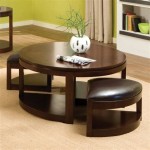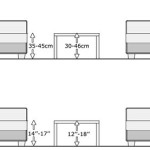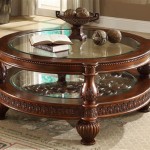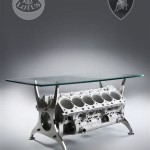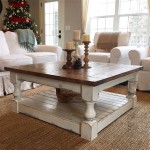Painting a Glass Table Top Black: A Comprehensive Guide
Glass tabletops offer an elegant and versatile surface for furniture. However, the desire to alter the aesthetic of a glass tabletop, perhaps to align with a new design scheme or simply to refresh its appearance, is a common occurrence. Painting a glass table top black is a popular choice for achieving a modern, sophisticated, or industrial look. This article provides a comprehensive guide to successfully painting a glass table top black, outlining the necessary materials, preparation techniques, application methods, and post-painting considerations.
The process of painting glass differs significantly from painting wood or metal. Glass is non-porous, presenting challenges for paint adhesion. Without proper preparation and the selection of appropriate materials, the paint is likely to chip, peel, or scratch easily. Therefore, meticulous attention to detail in each step is crucial for achieving a durable and aesthetically pleasing finish. The chosen black paint can vary from gloss to matte, depending on the desired aesthetic. Each finish will require a slightly different approach, especially regarding topcoats and overall durability.
Key Point 1: Essential Materials and Tools
The success of painting a glass table top black hinges on utilizing the correct materials and tools. Substandard materials can compromise the final product, leading to premature wear or an unsatisfactory appearance. The following list details the essential items required for this project:
1. Glass Cleaner and Degreaser: A high-quality glass cleaner is essential for removing surface contaminants such as grease, fingerprints, and dust. A degreaser, particularly one designed for automotive or industrial use, is beneficial for removing stubborn residues. Isopropyl alcohol is also an acceptable alternative for degreasing.
2. Lint-Free Cloths: Clean, lint-free cloths are necessary for wiping down the glass surface and preventing stray fibers from being embedded in the paint. Microfiber cloths are a suitable option.
3. Painter's Tape: Painter's tape is crucial for masking off areas of the glass that should not be painted, such as edges or decorative elements. Choose a high-quality tape designed for delicate surfaces to prevent damage to the glass.
4. Sandpaper (Fine Grit): While glass is not typically sanded, a very fine-grit sandpaper (e.g., 400-600 grit) can be used to lightly etch the surface, creating a mechanical bond for the primer to adhere to. This step should be performed cautiously to avoid scratching the glass.
5. Glass Primer: A specifically formulated glass primer is essential for promoting paint adhesion. These primers typically contain chemicals that create a strong bond with the glass surface. Follow the manufacturer’s instructions regarding application and drying time.
6. Black Paint (Suitable for Glass): The selection of paint is paramount. Choose a paint specifically designed for use on glass surfaces. Acrylic enamel paints are a common choice due to their durability and availability in various finishes (gloss, semi-gloss, matte). Epoxy paints offer superior durability and chemical resistance but may require specialized application techniques. Spray paint is often preferred for achieving an even, smooth finish, but brush-on paints can be used with careful attention to detail.
7. Paint Brushes or Spray Gun: If using brush-on paint, select high-quality brushes designed for fine finishing. Foam brushes can minimize brushstrokes. If using spray paint, ensure proper ventilation and consider using a spray gun for a more professional finish. If using a spray gun, proper settings and technique are essential to avoid runs and drips.
8. Drop Cloth or Protective Covering: Protect the surrounding work area from paint splatters and spills by using a drop cloth or plastic sheeting.
9. Safety Gear: Safety glasses, gloves, and a respirator are essential for protecting oneself from chemical exposure during the painting process. Ensure adequate ventilation in the work area.
10. Clear Coat/Sealer (Optional): A clear coat or sealer can provide an additional layer of protection and enhance the durability of the painted surface. Choose a clear coat that is compatible with the chosen paint type.
Key Point 2: Preparation is Paramount
The preparation phase is arguably the most critical aspect of painting glass. Inadequate preparation will inevitably lead to paint failure, requiring rework and potentially damaging the glass surface. This section details the necessary preparation steps.
1. Cleaning: Thoroughly clean the glass surface with a glass cleaner to remove all traces of dirt, dust, and fingerprints. Follow with a degreaser to eliminate any remaining oils or residues. Wipe the surface clean with a lint-free cloth. Repeat this process if necessary to ensure the glass is completely clean.
2. Masking: Carefully mask off any areas of the glass that should not be painted using painter's tape. Ensure the tape is applied smoothly and securely to prevent paint bleeding underneath. Overlap the tape slightly to create a seamless barrier. For complex shapes masking liquid solutions exist which peel away once the paint is dry.
3. Light Etching (Optional): Lightly etch the glass surface with fine-grit sandpaper. This step is not mandatory but can significantly improve paint adhesion. Apply gentle pressure and use a circular motion. The goal is to create a microscopic texture on the surface, not to scratch the glass. After etching, thoroughly clean the glass again to remove any sanding residue.
4. Primer Application: Apply a thin, even coat of glass primer to the entire surface that will be painted. Follow the manufacturer's instructions regarding application methods (brush, spray) and drying time. Allow the primer to dry completely before proceeding to the next step. Multiple thin coats of primer are preferable to a single thick coat, which can lead to drips and uneven coverage.
5. Inspection: After the primer has dried, carefully inspect the surface for any imperfections, such as dust particles or uneven coverage. If necessary, lightly sand the primed surface with very fine-grit sandpaper (e.g., 600 grit) to smooth out any imperfections. Clean the surface again before applying the black paint.
Key Point 3: Applying the Black Paint and Finishing
Once the glass has been properly prepared and primed, the application of the black paint can commence. Proper technique and attention to detail are essential for achieving a smooth, even, and durable finish. This section outlines the steps involved in applying the paint and finishing the project.
1. Paint Application: Apply the black paint in thin, even coats. Whether using a brush or spray paint, avoid applying too much paint at once, as this can lead to runs and drips. If using a brush, use smooth, even strokes in the same direction. If using spray paint, hold the can approximately 8-10 inches from the surface and use a steady, sweeping motion. Overlap each pass slightly to ensure complete coverage. Allow each coat to dry completely before applying the next.
2. Multiple Coats: Apply multiple thin coats of paint until the desired opacity and color depth are achieved. Two to three coats are typically sufficient. Allow each coat to dry completely before applying the next. Patience is key to achieving a professional-looking finish.
3. Drying Time: Allow the paint to dry completely according to the manufacturer's instructions. Drying time can vary depending on the type of paint, humidity, and temperature. Avoid touching or handling the painted surface until it is completely dry.
4. Clear Coat/Sealer (Optional): Once the black paint has dried completely, apply a clear coat or sealer to protect the painted surface and enhance its durability. Apply the clear coat in thin, even coats, following the manufacturer's instructions. Allow the clear coat to dry completely before handling the finished product.
5. Tape Removal: Carefully remove the painter's tape after the paint has dried completely. Pull the tape away from the painted surface at a 45-degree angle to prevent chipping or peeling. If any paint has bled underneath the tape, use a razor blade or craft knife to carefully score the paint along the edge of the tape before removing it. This will help to prevent the paint from chipping.
6. Final Inspection and Cleanup: Once the tape has been removed, inspect the painted surface for any imperfections. Touch up any areas as needed. Clean the work area and dispose of any waste materials properly. Allow the painted glass table top to cure for the recommended time before placing objects on it.
The success of painting a glass table top black relies heavily on meticulous preparation, the selection of appropriate materials, and the application of proper painting techniques. By following this guide, individuals can achieve a durable, aesthetically pleasing, and professionally finished result.

Glass Coffee Table Project Krylon Spray Paint

Black Table Glass Cut To Any Size At

Amazing Glass Table Makeover Home And Garden

How To Paint Faux Marble On Glass

How To Paint Glass Table Top Black Tiktok

How To Patio Table Makeover

Stenciling On Glass Make A Beautiful Table Top Nomadic Decorator

Dining Table Makeover Top Coating Black Paint

Decoupage Glass Tabletop

Diy Coffee Table Makeover
Related Posts

